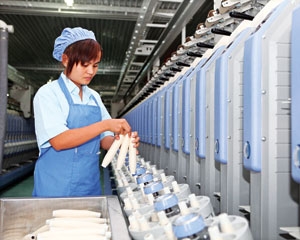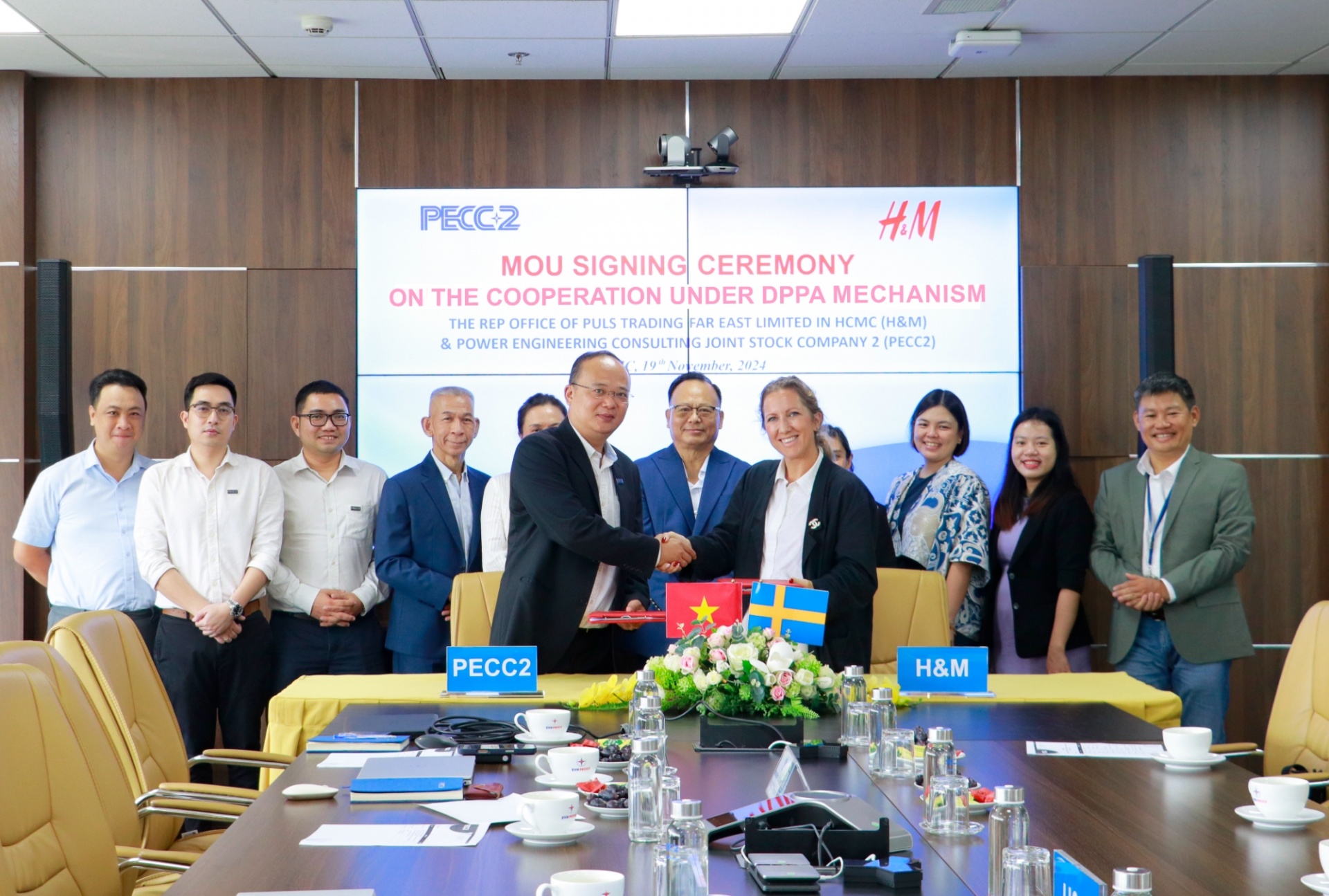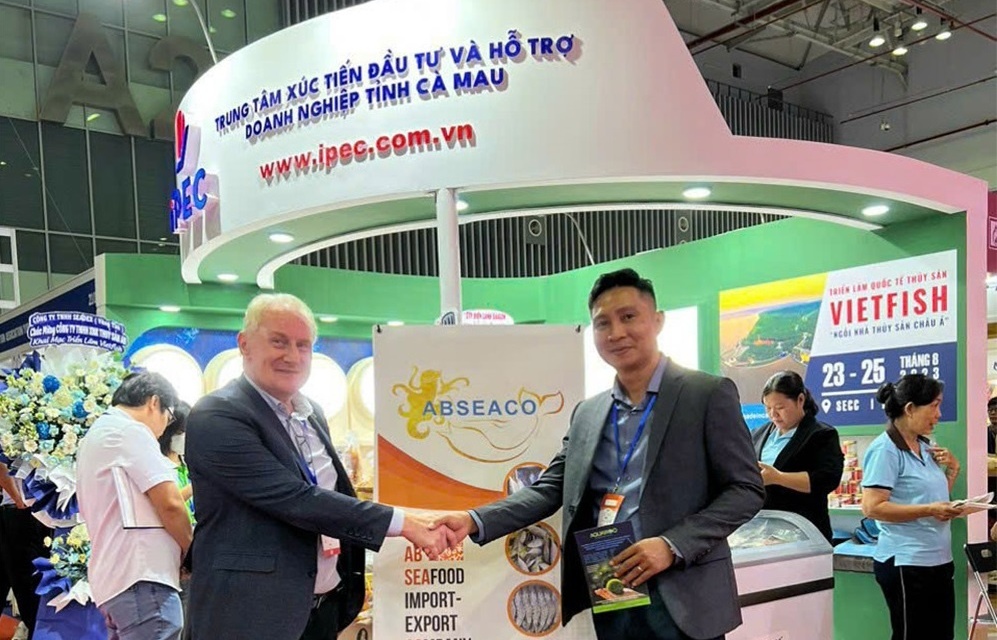TPP may attract more foreign investment projects in textiles and dyeing
 |
Foreign investors are considering pouring money into the textile and dyeing projects, while keeping a close watch over the TPP negotiation process.
In fact, experts have warned about the challenges Vietnam has to face when negotiating the issues relating to the textile and garment sector. Especially, the US side may put forward the principle of product origin, which is believed to put big difficulties for Vietnam.
Nevertheless, experts say that if the involved parties can harmonize their benefits through negotiations, TPP agreement would bring big opportunities to many Vietnamese sectors which Vietnam has big advantages. Especially, big opportunities would be opened in the spinning, weaving and dyeing: TPP would not only help boost exports, tax reductions, but also create a firm driving force for the investment and development.
Nguyen Son, deputy chairman of VCSA, said TPP would give the reason for the enterprises in the sectors to increase the productivity. At the meetings with VCSA’s representatives, some Chinese enterprises revealed that they were considering the possibility of expanding business or making new investment projects in the spinning industry.
Investors still can see great potentials in the sectors in the economic crisis period, which explains why more foreign direct investment (FDI) projects have still been granted licenses recently.
Kyung Bang Vietnam, a 100 per cent South Korean invested enterprise, has spent $40 million to implement the first phase of the project on the spinning factory with the capacity of 6000 tonnes per annum in the Bau Bang Industrial Zone in Binh Duong province.
Some other investors are following necessary formalities to be able to start the construction of their factories in Vietnam. One of them is Hong Kong’s Texhong Company which would build a spinning factory with the estimated investment capital of $300 million in the Hai Yen Industrial Zone in Quang Ninh province.
The Vietnam Textile and Garment Group (Vinatex) has also joined forces with Japanese Itochu to set up a joint venture to run a 50,000 spindle factory, capitalized at $120 million in the Bao Minh Industrial Zone in Nam Dinh city. It is expected that the project would kick off by the end of the year.
Virginia Foote, chair of the US-Vietnam Trade Council USVTC, said Vietnam should take initiative to attract FDI into the textiles instead of sitting and waiting for South Korean, Japan and China to join TPP to ensure the principle of product origin.
The big textile factories are mostly located in South Korea, Taiwan, China and Japan. Therefore, in the immediate time, Vietnam needs to increase the export turnover in order to persuade the investors in South Korea, China and Taiwan to relocate their factories to Vietnam.
A research work of Professor Peter A.Petri from the US Brandeis University showed that when joining TPP, smaller economies such as Chile, Peru and Vietnam would see the biggest income growth rates. Vietnam may see the GDP reaching $235 billion by 2025. Meanwhile, garments and textiles may bring the export turnover of $28.5 billion by 2025.
How the Vietnamese textile and garment industry can benefit from TPP would still depend on the negotiation results. However, Ngo Chung Khanh, a senior official of the Ministry of Industry and Trade, said that Vietnamese enterprises need to take initiative to build up the strategies to access the TPP-member markets right now.
What the stars mean:
★ Poor ★ ★ Promising ★★★ Good ★★★★ Very good ★★★★★ Exceptional
 Tag:
Tag:
Related Contents
Latest News
More News
- M&A prospects bright in many sectors (November 21, 2024 | 11:54)
- M&As working in tandem with health development (November 21, 2024 | 11:29)
- Slow disbursement hinders ambitions (November 21, 2024 | 09:00)
- Mitsubishi Estate launches Logicross Hai Phong - a milestone in logistics evolution (November 20, 2024 | 14:32)
- Semiconductor workforce partnerships deliver industry-relevant training (November 20, 2024 | 10:58)
- German Quickpack to invest $31.7 million in Long An province (November 20, 2024 | 09:31)
- Foreign-invested enterprises drive logistics investment in the southeast region (November 20, 2024 | 09:27)
- Chile visit underscores trade benefits (November 19, 2024 | 10:00)
- Trump’s second term impacts sci-tech activities and industry 4.0 technologies (November 18, 2024 | 10:00)
- Vietnam eyes nuclear revival to bolster energy security (November 14, 2024 | 16:46)





















 Mobile Version
Mobile Version